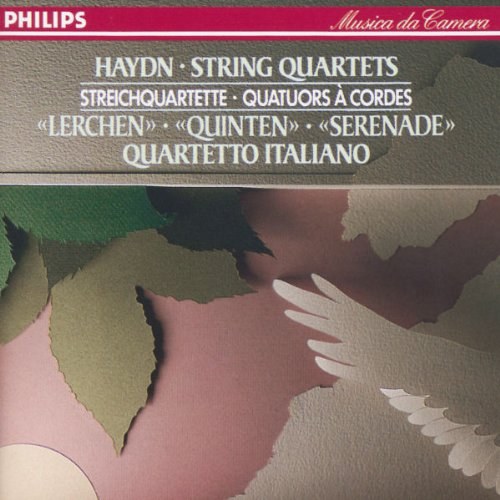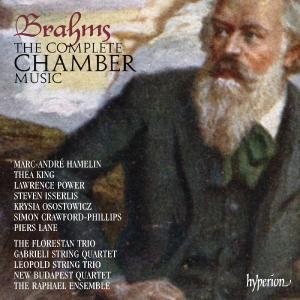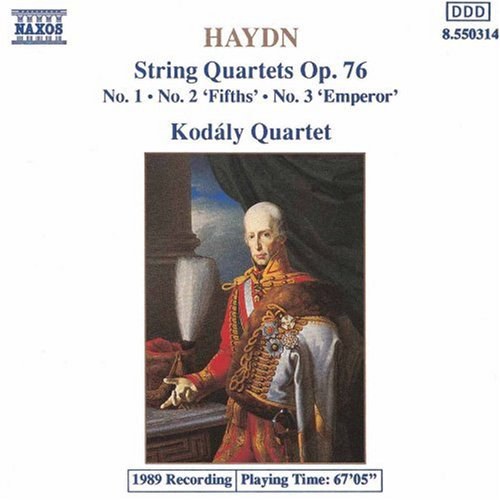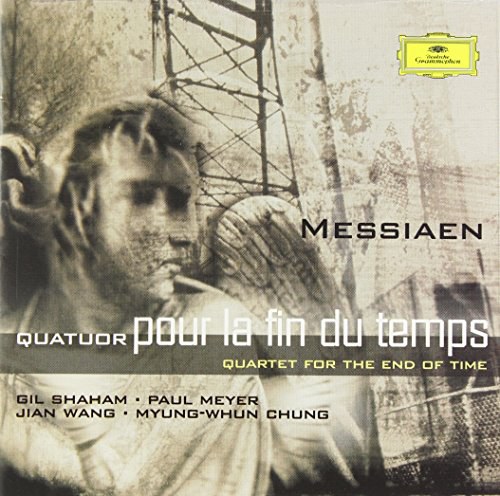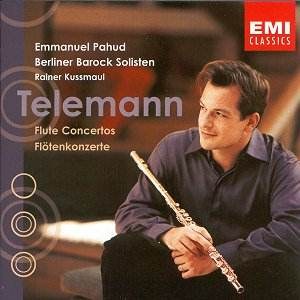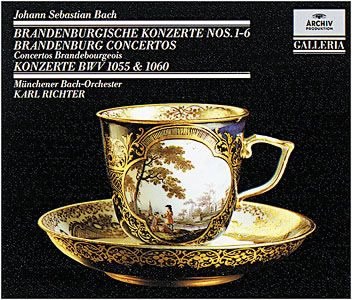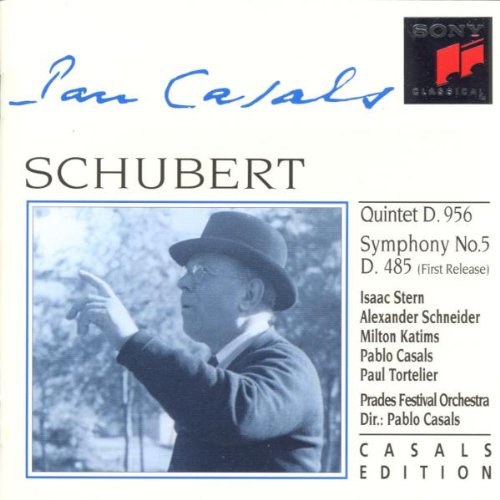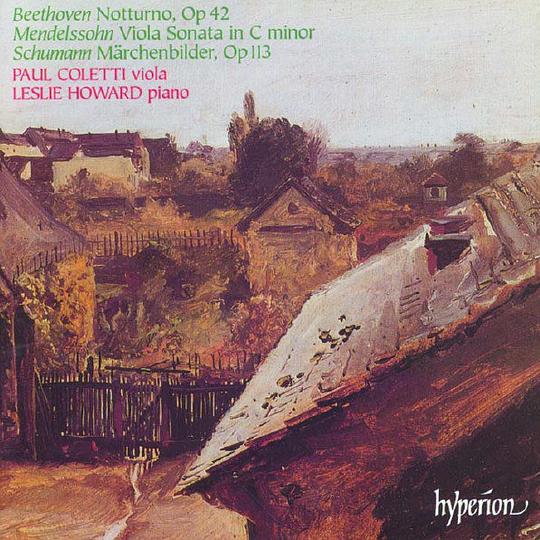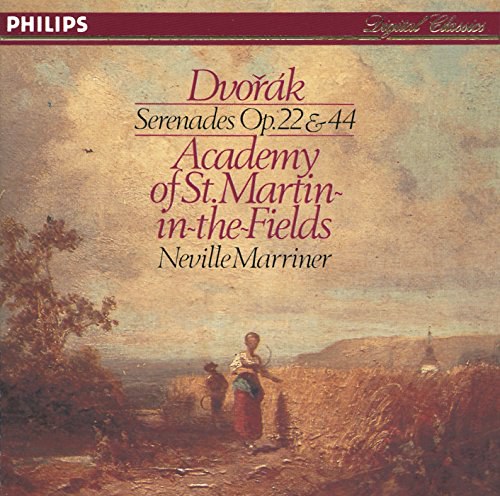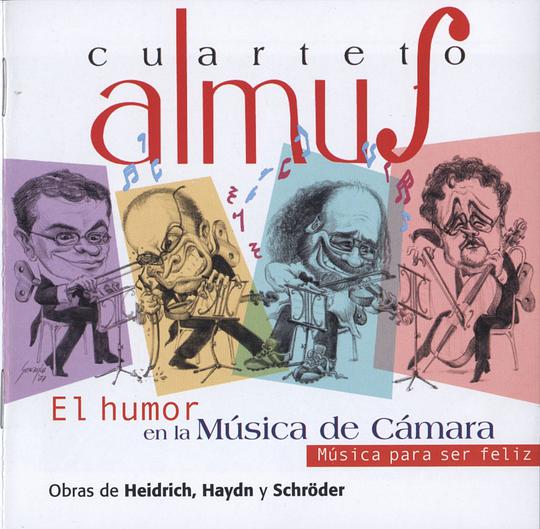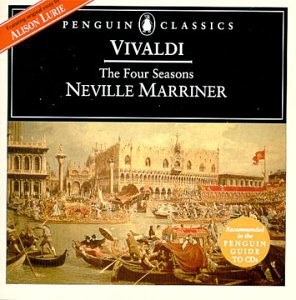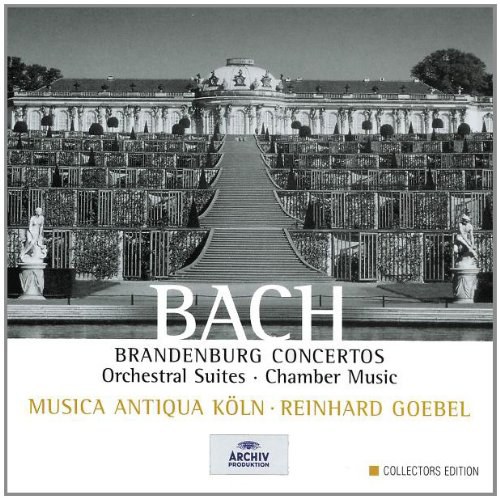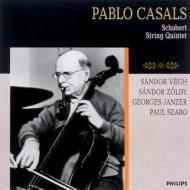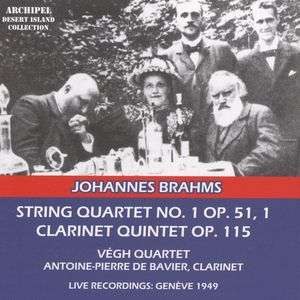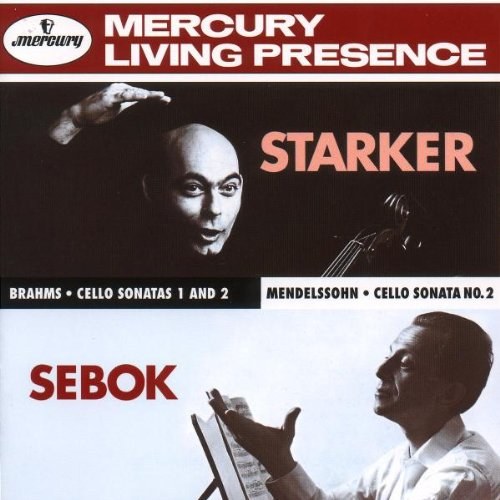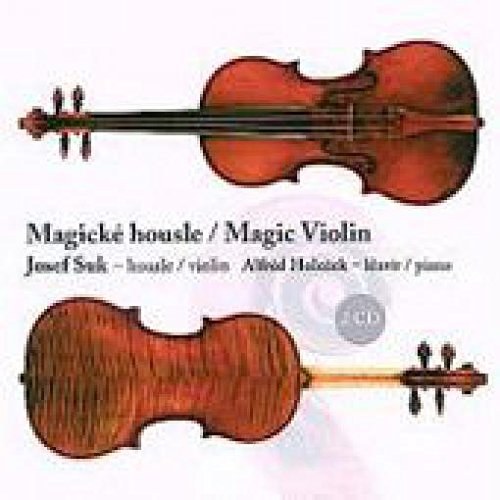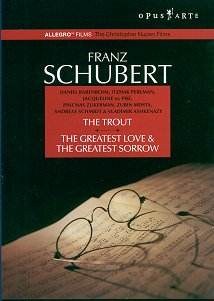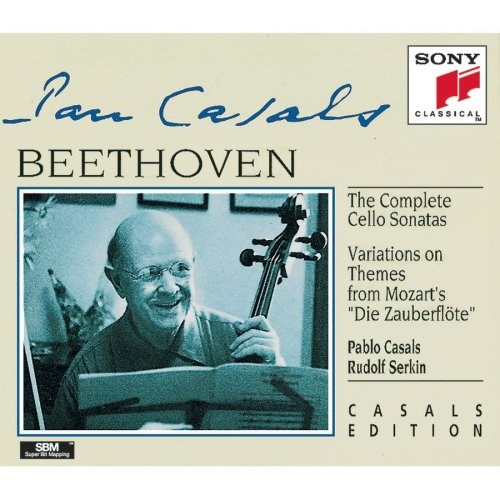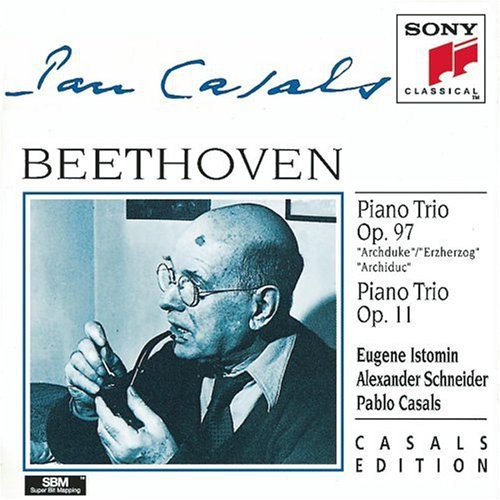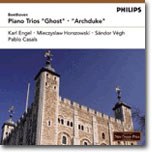In the second half of the nineteenth century it was above all Brahms who kept the traditional forms of chamber music alive. In doing so, he found himself in direct opposition to his leading Austro-German contemporaries; but while he could never reconcile himself to the ideals of Liszt and his ‘music of the future’, his admiration for certain of Wagner’s works was both genuine and open. That admiration was hardly reciprocated, though after he had invited Brahms to perform his ‘Handel’ Variations Op 24 Wagner reportedly conceded that something could still be done with the old forms ‘when someone who knows how to handle them comes along’.
Brahms’s knowledge of the great chamber works of Haydn, Mozart, Beethoven and Schubert was as deep as it was wide—indeed, for many years his awareness of his predecessors’ achievements was an inhibiting factor in his own creative output. His determination to leave for posterity only those works of his that he felt lived up to their example led him to destroy many of the pieces he composed during his early years, among them several string quartets. Aside from the Scherzo in C minor for violin and piano, the earliest of his chamber works that has come down to us is the B major Piano Trio Op 8. Significantly, Brahms revised it thoroughly more than thirty years after he had composed it. As we shall see, two of the movements in the last of Brahms’s piano quartets, Op 60, also had their origins in the mid-1850s, though again he reworked them at a later stage.
The String Sextet in B flat major Op 18, the first of Brahms’s two works of the kind, was completed in 1860. The model behind its scoring is likely to have been Louis Spohr’s C major Sextet Op 140—a work that was well known to the Schumann circle. Brahms’s Sextet shows a fondness for exploiting the contrast of light and shade between two opposing groups drawn from within the ensemble—as in the opening bars of the first movement, the dark-hued theme of the slow movement, or the main subject of the finale, which alternates the three lower instruments with a second trio made up of the two violins and first viola. Only the cheerful Scherzo, with its ‘bouncing’ staccatos reminiscent of the peasants’ merrymaking from Beethoven’s ‘Pastoral’ Symphony, will have none of such brooding sonorities.
The slow movement’s theme echoes the famous Baroque tune known as ‘La follia’, but the notion of writing a variation piece in the key of D minor with a calm D major interlude at its centre is one that stems from Bach’s solo violin Chaconne—a piece Brahms later transcribed for piano left-hand. Brahms thought highly enough of the Sextet’s slow movement to transcribe it, too, for piano, and to present it to Clara Schumann as a birthday gift.
The bulk of the String Sextet in G major Op 36 was composed in the autumn of 1864, with the finale being added the following spring. It is a work intimately bound up with Brahms’s recurring memories of Agathe von Siebold, the daughter of a Göttingen professor to whom he had briefly been engaged in the summer of 1858. Her name is encrypted in the closing theme of the first movement’s exposition, which revolves insistently around the notes A–G–A–H–E (the H is the German equivalent of our B natural). The slow movement has associations with a different side of Brahms’s complex love-life. The piece is a highly individualized variation form based on a deeply expressive theme he had quoted nearly a decade earlier in a passionate letter to Clara Schumann, and the ascending shape of its initial phrase is clearly related to the opening movement’s main subject. Towards the end, the music dissolves from minor into major, allowing the piece to come to a radiantly calm close.
The shimmering main theme of the finale gives rise at the start of the central development section to a moment in which we seem to hear the counterpoint of Bach filtered through the gossamer texture of a Mendelssohn scherzo. The piece as a whole is one that alternates passages of orchestral brilliance with others of a more dance-like character, and it rounds the work out in a mood of ebullient self-confidence.
Brahms’s two string quintets are scored for the Mozartian ensemble of two violins, two violas and cello. The String Quintet in F major Op 88, composed in the spring of 1882, is unique among Brahms’s chamber works for strings in being cast in three movements, rather than four. The design is explained by the dual function of the middle movement, as slow movement and scherzo rolled into one. Its two opposing sections—a sombre Grave, and a lilting Allegretto in the major that returns later in varied form as a scampering Presto—are based on a pair of piano pieces Brahms had composed in the 1850s, in the style of a sarabande and gavotte.
The regular tread of the opening movement’s main theme is offset by a rhapsodically lyrical second subject in the radiant key of A major, whose syncopated melody is given out initially by the first viola. The same juxtaposition of keys is to be found in the finale—a piece whose fleeting counterpoint seems to owe a debt to the last movement of Beethoven’s C major ‘Rasumovsky’ Quartet Op 59 No 3.
Brahms was in his late fifties when he composed his String Quintet in G major Op 111, in 1890, and he planned it as his swan-song. As we shall see, what made him change his mind about turning his back on large-scale composition was his meeting the following year with the clarinettist Richard Mühlfeld.
The Quintet’s exuberant opening cello melody eventually gives way to a lyrical waltz tune given out by the first viola, before the exposition is rounded off with a yearning violin theme that provides the material for the subdued opening bars of the central development section. Here, the extrovert tremolos of the work’s beginning are transmuted into a mysterious rustling sound, out of which, in a wonderful inspiration, emerges a vastly expanded and broadened version of the closing theme.
The Adagio is brief but telling. Its melancholy D minor theme, given out by the first viola, has more than a hint of the gypsy style, and it seems to hark back to the variation slow movement from the Op 18 String Sextet. The intermezzo-like third movement is in the minor, too—a yearningly expressive waltz, with syncopated inner parts lending the music a feeling of subdued agitation. There are further echoes of the Hungarian gypsy idiom in the finale, which sets off as though it were to be in B minor, before swinging round to the home key with a ‘bouncing’ melody of infectious cheerfulness.
Brahms’s first two published string quartets evolved over a long period of time. Although he completed a preliminary version of at least the C minor work in the mid-1860s, it was not until 1873, and after several intervening revisions, that he at last approved them for publication. None of Brahms’s works is more organically unified than the String Quartet in C minor Op 51 No 1: not only does each idea grow with unerring logic out of the last in a process of continual development, but the main subject of each movement clearly arises out of the same germ. The dramatic motif hurled forth at the start of the finale appears to set out in the key—F minor—of the intermezzo-like preceding movement, while the rise and fall of its melodic shape echoes the opening movement’s main theme. Moreover, the finale’s initial notes recall the theme of the slow movement, and the relationship between the two pieces becomes still more apparent when the finale’s theme later returns in a more subdued and tranquil form.
It was Brahms’s friend and biographer Max Kalbeck who first drew attention to the significance of the fact that the opening theme of the String Quartet in A minor Op 51 No 2 revolved around the notes F–A–E, in allusion to Joseph Joachim’s personal motto, ‘Frei, aber einsam’ (‘free, but lonely’). Those notes are followed by a more incisive rhythmical motif which is to become the focus of much attention during the movement’s central development section.
The sonority of the slow movement’s opening stage is unusually lean, with a fully harmonized quartet sound emerging only gradually. The middle section is a dramatic, agitated passage in the minor; but the outburst is short-lived, before Brahms introduces a resigned, lyrical theme in the major, that eventually brings the piece to its gentle conclusion.
The third movement makes a nostalgic return to the world of the eighteenth-century minuet. But this is no straightforward minuet: in place of a trio, Brahms writes a delicate scherzo-like passage in a quicker tempo, so that the piece as a whole fulfils a dual function.
The finale derives much of its tension from a metrical conflict between theme and accompaniment. The conflict is resolved towards the end, where the theme is transmuted into a gentle waltz in the major. But such whimsy will not do for long, and the work finishes back in the minor, hurtling inexorably towards its accelerated conclusion.
The String Quartet in B flat major Op 67, composed in 1875–6, is a more light-hearted affair than its predecessors. The ‘hunting’ theme of its opening bars may bring to mind Mozart’s ‘Hunt’ Quartet K458, also in B flat major, though the hemiola cross-rhythm that soon appears is nothing if not thoroughly Brahmsian. That new rhythm anticipates the ingratiating second subject, with its ‘rocking’ figure, where there is an actual change of metre.
Following the slow movement, with its Mendelssohnian main theme, Brahms writes a gently agitated intermezzo in the minor. It is one of his great viola solos, and in order to make its part stand out the remaining three instruments are muted throughout. As in the Clarinet Quintet Op 115, the finale is a set of variations which gradually works its way around to reintroducing the theme of the opening movement. In the final bars, the variation theme and the first movement’s ‘hunting’ subject are combined with deceptive ease.
In the autumn of 1862 Brahms sent Clara Schumann the first three movements of a quintet in F minor for two violins, viola and two cellos—the same ensemble that Schubert used for his great C major Quintet D956. She was unreservedly enthusiastic, but Brahms’s other musical mentor, Joseph Joachim, felt the music was too powerful to be conveyed adequately by a string ensemble. Brahms clearly took Joachim’s advice to heart, because the following year he rescored the work as a sonata for two pianos. This time, it was Clara Schumann who, after playing the work through, begged Brahms to think about its instrumentation yet again. The final version, the Piano Quintet in F minor Op 34, represents what can be seen as an amalgam of Brahms’s two earlier scorings.
In opting for the dark key of F minor, and a beginning that has the main subject given out in stark octaves followed by a dramatic outburst of semiquavers (sixteenth-notes), Brahms seems deliberately to recall the opening bars of Beethoven’s ‘Appassionata’ Sonata Op 57, and the opening movement’s recapitulation finds him borrowing another idea from the same work. Like Beethoven, Brahms fuses development and recapitulation into an uninterrupted flow, with the music’s tension maintained by means of a single note tapped out drum-like in the bass. In both works the note is a repeated C that is dissonant to the reprise of the main theme which unfolds above it. So unstable is this moment in Brahms’s piece, and so completely does one stage of the movement merge into the next, that the true recapitulation appears to begin only with the explosive return of the semiquavers.
The finale’s slow introduction is the most sombre portion of the work, and only gradually do its tortuously chromatic phrases acquire a more diatonic aspect, so that the music may lead seamlessly into the uncomplicated theme of the Allegro itself. Towards the end, the piece appears to be heading towards a resigned conclusion, before a much quicker coda, based on a rhythmic transformation of the rondo theme, brings it to a headlong finish.
Ever since, as a teenage keyboard virtuoso, he had toured with the Hungarian violinist Eduard Rémenyi, Brahms had been fascinated by the gypsy style. The finale of the Piano Quartet in G minor Op 25 is by no means his only attempt to reproduce the gypsy sound, but it is certainly the most spectacular. The Quartet begins in much more subdued style, with a ‘winding’ theme given out initially by the piano alone, in an atmosphere of quiet tension—as though the music were about to erupt at any moment. That eruption, when it occurs, is of tremendous force, its momentum propelled by a new, tautly sprung motif accompanying the theme in semiquavers. Since his central development section concentrates largely on the opening subject Brahms curtails its reappearance at the start of the recapitulation, joining it only for what had been its forceful restatement; and from this point on, the music continues to develop almost continually.
Following the shadowy, intermezzo-like second movement, with its uplifting trio in the major, the slow movement is a broad, hymn-like piece. Its smooth melody eventually gives way to a jagged idea in dotted rhythm, and to a more animated episode in which distant military-style music can be heard. Just as it appears to be dying away altogether, its tune erupts with force—as though a window had suddenly been thrown open, allowing the street-music to invade the room. The material of this violently contrasting episode never recurs; but towards the end, a fragment of the main theme on the violin is accompanied by a blaze of horns and trumpets from the piano, before peace returns.
The Piano Quartet in A major Op 26 is a much more leisurely work—indeed, the breadth of its conception is such as to make it the longest of all Brahms’s chamber pieces. Its opening movement is dominated by the gently swaying first theme, whose ‘rocking’ motion returns as a punctuating reference-point throughout the exposition. Of the wealth of thematic ideas, it is the last, with its sharply defined rhythm, that is seized upon as the springboard for the development section.
The opening Allegro’s ‘rocking’ figure also forms the mainstay of the slow movement—a deeply felt, nocturnal song, whose air of mystery is enhanced by a hushed series of sweeping arpeggios on the piano. Not until the ending of the piece do those arpeggios at last find peace, allowing the movement to sink to a serene close.
As befits the large canvas of the work as a whole, both the Scherzo and its trio are fully worked-out sonata movements in themselves. As for the energetic finale, its main theme derives its peculiar effect from one of Brahms’s favourite conundrums: a metrically complex theme is played against an obstinately regular accompaniment, lending the music a curiously dislocated feel. As in the finale of the G minor Quartet the arrival of the coda coincides with an increase in tempo, and in the dizzying last pages we seem to find ourselves back in the gypsy encampment.
The Piano Quartet in C minor Op 60 is at once the first and the last of Brahms’s three works of the kind. He originally composed it in the mid-1850s, as a work in three movements, and in the key of C sharp minor. Brahms tried the piece through in this form with Joachim, but he remained dissatisfied with it, and it was not for a further two decades that it reached its definitive version. When he entered it in his catalogue of works, Brahms noted: ‘Movements 1 and 2 earlier; 3, 4 Vienna [18]73–74.’ Since the first version of the work clearly had no scherzo, the question remains as to the source of its ‘earlier’ second movement. The answer may well lie in its form—not a conventional scherzo and trio at all, but a through-composed movement that may have formed the finale of the 1856 score.
For all the consolatory warmth of its slow movement, this is surely the bleakest of all Brahms’s chamber works. When he sent it to Fritz Simrock for publication, in August 1875, he told him: ‘You should have a picture on the title-page—a head with a pistol against it. I shall send you my photograph for the purpose … Since you seem to like colour printing, you could use blue frockcoat, yellow breeches and riding boots.’ Brahms’s description of the appropriate apparel was a reference to the protagonist of Goethe’s famous epistolary novel, Die Leiden des jungen Werthers (‘The Sufferings of Young Werther’), in which the eponymous hero commits suicide over his unrequited love for a woman who is already betrothed. Whether or not in the mid-1850s the young Brahms felt a Werther-like guilt about his deepening attachment to Clara Schumann, there can be no mistaking the music’s tragic impulse.
The work begins in an air of brooding intensity whose uneasy calm is shattered by a sudden rushing scale from the strings, precipitating a forceful variant of the initial motif. Much later on, the recapitulation transmutes that scale into a ghostly echo of its former self, and thenceforward the music continues to develop—so much so that it does not find its way back to the home key until the final page.
The Scherzo second movement progresses in one uninterrupted sweep from beginning to end, though a new idea presented at roughly its mid-point acts as a form of quasi-trio, before ominously subdued repeated notes from the viola lead to the return of the opening material.
The chain of evenly descending melodic thirds that inaugurates the slow movement’s theme came in Brahms’s late years to stand as a symbol of death; but here, with the music in major rather than minor, the melody seems to convey instead an atmosphere of subdued ecstasy.
A feeling of barely suppressed tension runs through the opening pages of the finale, which forcibly recall the main theme of Mendelssohn’s great C minor Piano Trio Op 66. Just as the conflicts of Mendelssohn’s finale are eventually resolved with the emergence of a triumphant chorale theme, so the first stage of Brahms’s piece comes to rest with a quiet chorale-like melody played by the strings. The chorale melody is heard again in an embellished form in the central development, before Brahms whips up the excitement in preparation for the stormy return of the main theme which marks the start of the recapitulation.
Brahms was in his early twenties when he composed the first version of his Piano Trio in B major Op 8, but hardly had the firm of Breitkopf und Härtel accepted it, in June 1854, than he confessed to Joachim that he would gladly have held on to it, in order to make alterations. For a performance in Vienna in 1871, Brahms made cuts in the opening movement; but thirty-five years after the work’s publication he returned to it yet again. ‘You cannot imagine how I trifled away the lovely summer’, he told Clara Schumann in the autumn of 1889. ‘I have rewritten my B major Trio and can now call it Op 108 instead of Op 8.’
Brahms’s revision amounted to a process of recomposition in which only the Scherzo—a piece of Mendelssohnian lightness—emerged more or less untouched. The broad opening melody of the first movement, for the piano and cello, survived intact, but the exposition’s rather static latter half, with a latent fugue subject clearly destined for elaboration at a later stage, was jettisoned, as was the entire development section.
In the slow movement, Brahms replaced the first episode with new material, beginning with a long cello melody; while a second episode in the form of an agitated Allegro was also discarded. However, the wonderfully serene opening of the movement, with the piano’s chorale-like phrases answered by a contrasting idea on the two stringed instruments, was a youthful inspiration that clearly satisfied the mature Brahms. So, too, was the fact that the finale is not only in the minor, but fails firmly to establish the home tonality at all until its closing pages. Nor does the ending provide a resolution—indeed, the music finishes as despairingly as it began.
The Trio in E flat major for piano, violin and horn Op 40 was composed in 1865, in forest surroundings outside the town of Baden-Baden. Its opening movement is unique among Brahms’s chamber works in not being cast in sonata form. Instead, it alternates two ideas in rondo fashion, the second of them slightly more agitated than the first. One consequence of this unorthodox beginning is that the Scherzo, rather than being a sectional piece, is a through-composed sonata form.
The slow third movement begins with rolled chords deep in the bass of the piano, like some infinite sigh of regret. The atmosphere of mourning is heightened by the sustained, winding theme introduced at the first entrance of the violin and horn. The piano’s rolled chords return, to be followed by another sinuous theme, played this time in dialogue by horn and violin alone. This second theme, closely related to the first, is to weave its way through the remainder of the piece, until a more consolatory version of the same idea provides an unmistakable pre-echo—albeit in slow-motion—of the finale’s bucolic main theme.
The finale’s ‘hunting’ theme is enlivened by off-beat accents and, later, by a characteristically Brahmsian cross-rhythm which has the bar divided simultaneously into two beats by the violin and horn, and three by the piano. For all its rondo-like character, this high-spirited piece is actually a sonata movement, complete with a repeat of its exposition.
In June 1880, Brahms began work simultaneously on two new piano trios—one in C major, the other in E flat. He completed the opening movement of each, and showed them to some of his closest friends and advisers. But for all Clara Schumann’s preference for the E flat major piece, the always self-critical Brahms eventually destroyed it. Two years later, he took up its companion-piece again, and completed it with the addition of three further movements. It was published in December 1882 as his Piano Trio in C major Op 87.
The opening Allegro contains an unusual wealth of thematic material: an imperious first subject given out in octaves by the violin and cello alone; a shadowy, chromatic subject, a further smooth idea played by the strings in octaves, and a gracious closing theme in dotted rhythm. The central section finds room to elaborate all of these except the last; and in characteristic fashion, Brahms carries the music’s developmental character right through to the reprise of the second subject. There is also a substantial coda, in which a sweeping augmented version of the main theme as heard in the development makes a splendid return.
The slow movement is a set of variations on a melancholy theme in A minor, whose ‘short–long’ rhythm has a Hungarian flavour. The penultimate variation, in the major, transforms it into a smooth, expansive melody of great beauty. The Scherzo is in the minor, too: a mysterious, fleeting, piece whose predominant dynamic marking is pianissimo. Its shadowy character is offset by the C major confidence of the soaring melody in the trio section. As for the finale, it is one of those good-humoured rondos at which Brahms was so adept. Much play is made of the staccato repeated-note figure with which the piano accompanies its opening theme; and towards the end the theme reappears in a subdued augmented form, as though in echo of the procedure adopted in the opening movement.
The summer of 1886 found Brahms at the Swiss resort of Hofstetten. There, in the idyllic surroundings of Lake Thun, he completed three strongly contrasted chamber works: the grandly conceived F major Cello Sonata Op 99, the relaxed and lyrical A major Violin Sonata Op 100, and the dramatic Piano Trio in C minor Op 101. The Trio is one of Brahms’s most concentrated and intense scores. Its forceful opening theme has two limbs: a sinuous line in the upper voice, and a rising scale in the bass. These two ideas propel the greater part of the movement; and even the more relaxed second subject is based on a broadened version of the rising scale.
The Presto non assai shares the spectral character of the corresponding movement in the Op 87 Trio. This time, the strings are muted, and the middle section—hardly a trio in the conventional sense—does little to disturb the nocturnal atmosphere.
The slow movement, with its recurring pattern of a single bar of three beats followed by two of two beats, has the piano and strings alternating, as they had done in the Adagio of the Op 8 Trio. The pulse quickens for a middle section maintaining both the music’s metrical irregularity and its basic alternation between the instrumental forces.
The finale sets off with what could be described as an intensified ‘hunting’ rondo theme. In fact, as in the Op 40 Horn Trio, the piece turns out to be a sonata form, and its concentration on the minor is almost unrelieved until the onset of the coda. Even there, however, the music’s dramatic sweep remains undiminished, and the work ends as powerfully as it began.
In the spring of 1891 Brahms’s attention was drawn to the playing of Richard Mühlfeld, the principal clarinettist of the court orchestra at Meiningen. Attracted by the warmth and delicacy of Mühlfeld’s tone, Brahms composed both his Trio Op 114 and his Clarinet Quintet that summer, and the two works were premiered at the same concert, in December. The two clarinet sonatas for Mühlfeld followed in 1894.
The inspiration behind the Trio in A minor for piano, clarinet and cello Op 114 may have been the clarinet, but it is the cello that frequently takes the leading role. Both principal subjects in the outer movements are initially given to the stringed instrument, and at the start of the work the cello is actually heard on its own, with a rising theme whose shape is perfectly complemented by the predominantly falling intervals of the second subject, in the major. Between the two subjects, the music reaches its first climax, approached by a brief series of rapid scales on the clarinet and cello; and it is these scales, sounding at first like the rushing wind, that are to stamp their mark on much of the central development. The scales make a distant return in the coda, sweeping the music to a ghostly close.
The slow movement shares its aura of autumnal serenity with that of the Clarinet Quintet, and since it does so without any equivalent to the Quintet’s more agitated episode, its atmosphere of profound serenity is more complete. The entire piece gives the impression of a continuous, meditative improvisation.
The third movement is a Brahmsian intermezzo par excellence—a waltz of infinite gracefulness, whose easy-going atmosphere of charm is scarcely ruffled by a slightly more athletic trio section. By contrast, the finale is a muscular piece with more than a tinge of the gypsy style to it. This time, there is no question of a subdued close. Instead, the music gathers force to bring the work to an ending of altogether symphonic weight.
In scoring the slow movement of his Clarinet Quintet in B minor Op 115 for the wind instrument with muted strings, and in casting its finale as a set of variations, Brahms was clearly paying homage to Mozart’s Clarinet Quintet K581. At the same time, the notion of beginning a work in the key of B minor with a theme that sets off in an unambiguous D major was borrowed from Haydn, both of whose B minor quartets (Op 33 No 1 and Op 64 No 2) open with a similar deliberate deception. Moreover, the earlier work of that Haydn pair begins, as does Brahms’s Quintet, with the sound of the two violins on their own.
In the slow movement’s serene outer sections the clarinet’s broad theme is shadowed in syncopated quasi-canon by the first violin, while the second violin and viola provide a murmuring accompaniment. The middle section turns to the minor, but for all its overwhelming contrast this section is essentially an elaborate rhapsodic variation on the movement’s opening melody. Here is the last manifestation of Brahms’s love of gypsy music—and no instrument could express it more vividly than the clarinet. But perhaps the most profound inspiration of the piece occurs in its closing bars, where the middle section’s wild improvisatory flights of fancy make a return in a form of distant echo, and at something like a quarter their original speed, allowing the music to die away in a haze of nostalgia.
The D major third movement combines a gentle intermezzo with a scherzo. Its smoothly flowing opening theme eventually gives way to a transparently scored quicker variation that forms a miniature sonata movement in its own right. It is, indeed, so fully worked out that the music never returns to its original tempo, though Brahms cannily allows the movement to come full-circle by having its last bars mirror the closing moments of the opening section.
The finale is constructed in circular fashion, too, but this time the frame of reference is much larger. In common with the finale of the Op 67 String Quartet, it is a set of variations; and as in that earlier work the concluding variation weaves the first movement’s main theme into its fabric. At the end, the work comes to rest with the dying strains of the opening movement’s conclusion.
Like the Piano Quintet in the same key which he completed thirty years earlier, Brahms’s Clarinet Sonata in F minor Op 120 No 1 begins with a broad phrase given out quietly in bare octaves. The shape of its initial four notes is transferred to the bass line of the movement’s serene, almost chorale-like second theme; and Brahms points up the connection between the two ideas at the start of the central development, where they are heard simultaneously. This brooding piece subsides in a resigned coda, with an arpeggiated piano part evoking the sound of a harp.
Resignation is the keynote, too, of the slow movement, whose drooping phrases seem to typify the introspective melancholy of so much of Brahms’s late music. The third movement, by way of contrast, is a piece of positively rustic charm, though the bleak, syncopated piano-writing of its middle section invokes a rather darker atmosphere.
The Sonata ends in exuberant mood, with a rondo in the major. The chimes of its initial three repeated notes run like a guiding thread through the piece; and both the repeated notes and the quickly moving figure heard beneath them are later broadened to form an important subsidiary theme.
The opening movement of the autumnal Clarinet Sonata in E flat major Op 120 No 2 would seem to have been tailor-made for the feminine sensitivity of Richard Mühlfeld’s playing. (Brahms’s nickname for him was ‘Fräulein Klarinette’.) The music itself is seamless, and the sinuous outline of its opening phrase governs virtually the entire discourse. The reflective mood is shattered by the second movement—a powerful, full-blooded rhapsody in the minor that seems to look back to the world of Brahms’s youth. Like his first published piano work, the dramatic Scherzo Op 4, it is in the dark key of E flat minor; and its contrasting middle section, in B major, recalls both the key and the broad melodic style of one of the trios in that early piece.
The finale’s gently flowing theme gives rise to a series of increasingly intricate variations. Eventually an acceleration in pace coincides with a turn to the minor, recalling the turbulence of the Sonata’s middle movement. The work ends forcefully, though with the major mode firmly re-established.
The Op 120 sonatas were published in no fewer than three forms: in order to ensure the widest possible dissemination for the music, Brahms had prepared additional versions for viola and piano, and for violin and piano. For the viola version, he took advantage of the opportunity to write in double stops or chords for the instrument; but since the viola’s range is similar to that of the clarinet, the music required little other alteration. In their viola manifestations the Op 120 sonatas are more than just substitutes for the original version; it can be argued that the dark, husky tones of the stringed instrument are no less suited to the music than is the smoother sound of the clarinet.
The Cello Sonata in E minor Op 38 was composed in two distinct stages. First, in 1862, came three movements: an Allegro, an Adagio and an Allegretto. Then, three years later, Brahms added the fugal finale, and at the same time decided to suppress the original slow movement since the work in its four-movement form was, as he said, ‘too stuffed with music’.
The Sonata’s peculiar atmosphere, at once melancholy and intense, results at least in part from the fact that its concentration on the minor is almost unrelieved. Even the opening movement’s contrasting second subject retains the minor mode; and although there is a more consolatory third theme in the major, it reappears in a plangent minor-mode transformation in the bars immediately preceding the onset of the recapitulation.
The middle movement is in the style of an old-fashioned minuet. There is, perhaps, a touch of wry detachment about its courtly elegance; and Brahms begins it with understated wit, quoting a phrase that is clearly an ending rather than a beginning, before the cello enters with the minuet theme itself. The same phrase is used as the starting-point for the more smoothly flowing theme of the trio section, still in the minor.
Brahms brings all his contrapuntal art to bear on the gruff fugal finale, using its theme, borrowed from Bach’s The Art of the Fugue, both in its original form, and in inversion. The countersubject played by the pianist’s left hand shortly after the beginning (at the point where the cellist enters with the fugue subject itself) reappears later as the main melody of a more tranquil episode in the major. Towards the end, the tempo increases and all the threads are gathered together in a vertiginous coda.
Considerably grander in conception is the Cello Sonata in F major Op 99, designed for the cellist of the celebrated Joachim Quartet, Robert Hausmann, who had launched himself on a solo career in the previous year. Its opening movement unfolds largely against a background of dramatic tremolos, which are transferred at the end of the exposition from piano to cello, swaying in rapid alternation across ‘open’ and ‘stopped’ strings. As if unable to contain himself, the pianist bursts in again with the tremolos at the start of the central development; more arresting still is the mysterious approach to the recapitulation, where the tremolos appear pianissimo in the cello’s lowest register, while the pianist plays a series of long-held chords outlining the shape and harmony of the main theme, as though its melody had become frozen into immobility. The idea is one Brahms took up again, though to rather different effect, at the parallel point in his Fourth Symphony.
For his slow movement, Brahms moves into the distant and radiant key of F sharp major. The opening theme is a double one—the piano playing a slowly rising melody, while the cello has a pizzicato idea in shorter note-values. The highly original use of pizzicato returns in an expanded form following a more agitated middle section whose theme is briefly recalled in the movement’s calm closing bars.
In the impassioned Allegro passionato the pianist finds himself having to play the double line of the rapidly moving theme legato with his right hand alone, while the left has a widely spaced accompaniment. The smoothly unfolding melody of the major-mode trio offers a brief moment of relaxation, but for prolonged respite from the Sonata’s pervasive intensity we have to wait for the genial finale—a piece in which Brahms again makes very individual use of pizzicato. Particularly striking are the closing moments, where the cello plucks at the rondo theme’s outline, transforming its smooth rhythm into a playful ‘Scotch-snap’, before the music gathers momentum again to bring the work to a rousing close.
On 30 September 1853 Brahms called at the Schumanns’ home in Düsseldorf, bearing a letter of introduction from Joachim. The following month, Joachim himself paid a surprise visit, and Schumann proposed that a composite ‘greetings sonata’ for violin and piano should be composed in his honour. Schumann himself wrote the slow movement and finale, his pupil Albert Dietrich the opening movement, and Brahms the scherzo. Schumann eventually complemented his contribution with two further movements, to form a sonata of his own, but Brahms’s Scherzo in C minor is the only portion of the original work that has remained in the active repertoire. In later life, Brahms became only too aware of the shadow of Beethoven. At this stage, however, he felt no such inhibitions: boldly, he set his scherzo in Beethoven’s favourite dramatic key of C minor, and he even went so far as to base it on the ‘fate’ rhythm from the Fifth Symphony. The trio section, in the major, is a sweeping, passionate melody for the violin which makes a triumphant return in the coda, rounding the piece off in majestic style.
A quarter of a century elapsed before Brahms composed any further music for violin and piano; and of his three violin sonatas, only the last was to return to the forceful style of the C minor Scherzo. The first two sonatas are predominantly lyrical works, and both make use of material from actual songs. The Violin Sonata in G major Op 78 was written between 1878 and 1879, at roughly the same time as Brahms’s Violin Concerto. The goal of the entire Sonata is the theme of its rondo finale—a quotation from Brahms’s Regenlied and the closely related Nachklang, both setting words by Klaus Groth that use rainfall as a metaphor for tears. Like the songs, Brahms’s melancholy finale is in the minor, only resolving into the major near its close; and the songs’ repeated-note dotted rhythm also informs both the main subject of the Sonata’s opening movement, and the slow movement’s march-like episode. In addition, the main theme of the slow movement makes two reappearances during the course of the finale.
Not content with using a single song theme, the Violin Sonata in A major Op 100 contains reminiscences from at least three—principal among them Wie Melodien zieht es mir leise durch den Sinn (‘It is as though melodies were passing quietly through my mind’), which appears as the opening movement’s second subject. Another song written at the same time as the Sonata was Immer leiser wird mein Schlummer. Its climax occurs at the words, ‘Komm, o komme bald’ (‘Come, oh come soon’), which are set to the same interval of the rising third that initiates the rondo theme of the Sonata’s finale. Komm bald is the title of another of Brahms’s songs, and the melodic shape of its introduction is echoed in the Sonata’s opening bars. All these songs were dedicated to the contralto Hermine Spies, who was staying in nearby Berne. Brahms was by no means impervious to her attractions, and according to Max Kalbeck the Violin Sonata was written in anticipation of a visit from her.
The middle movement is one of Brahms’s characteristic fusions of slow movement and scherzo. Its alternating sections, although outwardly strongly contrasted, are subtly linked through their common rising and falling melodic shape. As for the rondo finale, its theme is one of the great melodies conceived for the rich sound of the violin’s lowest string. The piece, however, is not without its shadowy moments, and the music’s opposing moods are not reconciled until the closing bars.
The prolific summer months of 1886 also saw the start of another violin sonata, conceived on an altogether grander scale than its two predecessors. It was, however, not until 1888, again in Thun, that Brahms completed the dramatic Violin Sonata in D minor Op 108. Much of the work’s tension lies beneath the surface (the sotto voce beginning, for instance, with the subdued agitation of the piano’s syncopated accompaniment), and it is not until the finale that the latent violence is allowed to erupt with full force.
The opening movement is remarkable for the static nature of its development section, traditionally the sonata form’s moment of greatest harmonic instability. Having written an unusually restless exposition, Brahms sets the entire development over a repeated pedal note on the dominant (A), counterbalancing it in the movement’s coda by a similar pedal on the tonic.
The serene slow movement has one of those double themes of which Brahms was so fond, in which what at the outset appears to be merely accompanimental subsequently assumes a thematic life of its own; while the third-movement (a scherzo marked Un poco presto e con sentimento) inhabits a similar shadowy world to that of the piano trios Opp 87 and 101. The forceful finale brings with it a suggestion of a tarantella, but it also has an almost chorale-like episode—a distant reminder, perhaps, of the calm second subject in a much earlier D minor work by Brahms: the Piano Concerto No 1.
Misha Donat © 2008
